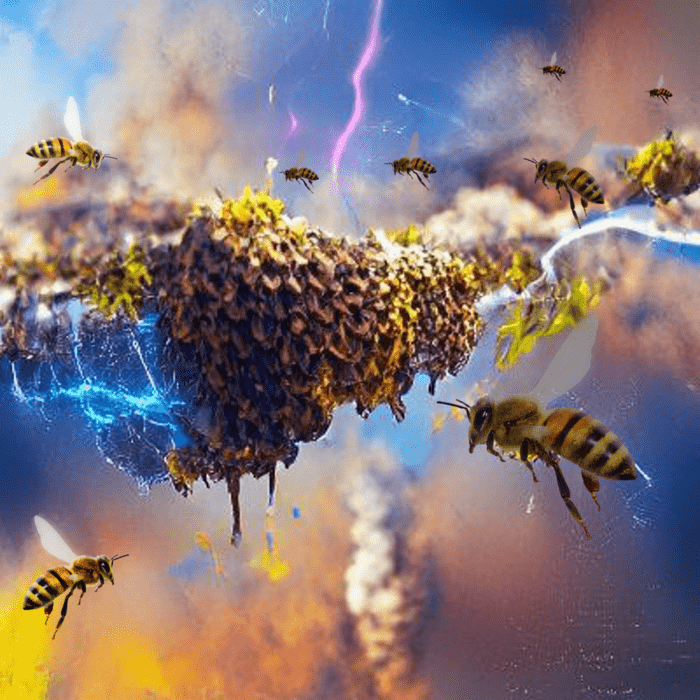
It’s not just power plants and batteries that produce an electrical charge. Like virtually all creatures, your very own body is a source of bioelectric potential. These electric potentials are generally very weak, ranging in strength from one to a few hundred millivolts. However, some species, such as the electric ray and the electric eel, have evolved powerful specialized organs that can produce currents of one ampere at 600 to 1,000 volts, enough to immobilize or kill relatively large prey.
The field of bioelectricity is still relatively new and riddled with mysteries. But although there is still much we don’t know, the field is growing rapidly. For instance, a new study that came out today has revealed insights about the surprising impact swarming honeybees have on atmospheric electric charge in a perfect example of how biology can shape physics and vice-versa.
“It was known before that organisms carry an electric charge, but this is very small. It would take like 50 billion bees to light an LED. So that they can increase background atmospheric electric field 2-10 fold as reported in the study came as a big surprise. This makes it the first report of biology as a source of biogenic space charge, which can be as relevant as physical phenomena such as clouds,” Ellard Hunting, a biologist at the University of Bristol and first author of the new study, told ZME Science.
Hunting and colleagues have been studying how insects and other organisms interact with the static electric field for some time. For instance, bees can sense the tiny electric field generated by flowers to find food and this sense is so refined they can tell whether the flower was visited by another bee earlier. Spiders have tiny hairs called trichobothria that sense electric fields, sort of like human hairs rising in response to static electricity, and when the field is strong enough, they will climb up a high twig or blade of grass, quickly spin an improvised silk parachute, and take off into the distance. Even trees produce substantial alterations in atmospheric electric properties, as well as in soil electrochemistry.
“We only recently discovered that biology and static electric fields are intimately linked and that there are many unsuspected links that can exist over different spatial scales, ranging from microbes in the soil and plant-pollinator interactions to insect swarms and the global electric circuit. This makes it an exciting new area of empirical research,” Hunting added.
While they were measuring the electric fields in the atmosphere using specialized equipment, the researchers noticed their measurements peaked when bee swarms occasionally buzzed through. “That sparked my interest. Being a biologist, I thought it would be good to team up with Prof. Giles Harrison, an atmospheric physicist at Reading,” Hunting told me, prefacing the growing importance of interdisciplinary work in modern science.
Armed with cross-disciplinary expertise and a lot of patience loitering in the woods, waiting for bees to swarm, the researchers found that the small charge generated by individual bees is amplified by their great numbers to produce a significant effect on atmospheric electricity. The team calculated that honeybee swarms change the atmospheric electricity by 100 to 1,000 volts per meter.
That’s about as much atmospheric electric charge as you’d expect to see within a storm cloud, which could affect the charging of water droplets and dust particles in clouds up above in ways that are yet to be fully understood.
“Interdisciplinarity is valuable here – electric charge can seem like it lives solely in physics, but it is important to know how aware the whole natural world is of electricity in the atmosphere. Thinking more broadly, linking biology and physics might help with many puzzling problems, such as why large dust particles are found so far from the Sahara,” Hunting said .
The findings appeared in the journal iScience.


